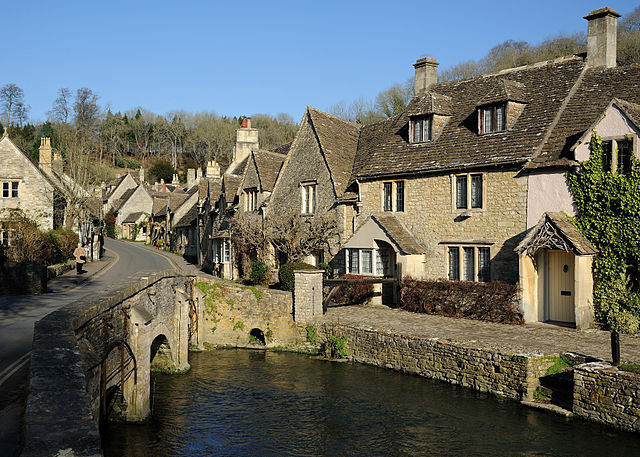The Thames and Severn Canal is a canal in Gloucestershire in the south-west of England, which was completed in 1789. It was conceived as part of a cargo route from Bristol and the Midlands to London, linking England's two largest rivers for better trade. The route climbs the steep Cotswold escarpment through the Golden Valley, tunnels underneath the summit of the Cotswold Edge, and emerges near the source of the Thames.
The canal at Brimscombe
Looking east from Upper Walbridge Lock
Cerney Wick Lock, Thames and Severn Canal
The canal towpath at South Cerney near Cirencester. Large trees have grown up in the 70 years since the canal was abandoned.
The Cotswolds is a region of central South West England, along a range of rolling hills that rise from the meadows of the upper River Thames to an escarpment above the Severn Valley and the Vale of Evesham. The area is defined by the bedrock of Jurassic limestone that creates a type of grassland habitat that is quarried for the golden-coloured Cotswold stone. The predominantly rural landscape contains stone-built villages, towns, stately homes and gardens featuring the local stone.
Castle Combe, a Cotswolds village with buildings made of Cotswold stone
Bibury, a characteristic Cotswold village
Row houses of Cotswold stone in Broadway, Worcestershire. The quaint buildings of the village attract numerous tourists.
Broadway row houses of Cotswold stone








